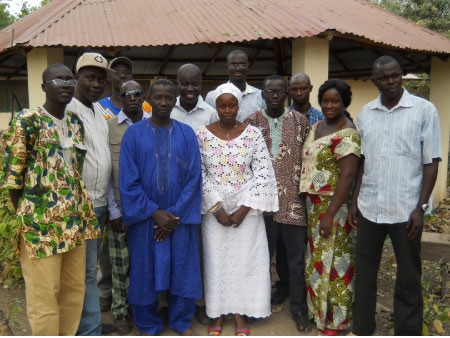
Trust Agency for Rural Development (TARUD), in partnership with Banafaa Project, recently concluded a three-day training for field workers on the usage of need assessment tools.
The training, which lasted for three days, was held at the National Beekeepers Association’s office in
Speaking on the occasion, Fabourama Darboe, Water, Sanitation and Hygiene (WASH) coordinator for TARUD, said TARUD had been sub-contracted by the project to conduct a need assessment in seven fishing landing sites along the coast and nine oyster harvesting areas along the River Gambia.
The affected fishing landing sites include Kartong, Gunjur, Sanyang, Bato Kunku, Tanjeh, Brufut, and Bakau.
Similarly, the oyster harvesting areas involved are Carmalo, Wencho, Old Jeshwang,
The purpose of the need assessment was to select seven sites from the sixteen for the provision of water and sanitation.
According to him, the Gambia-Senegal Sustainable Fisheries project called BANAFAA is a five-year initiative (2009 - 2014) that is supported by the American people through the USAID West Africa Region Mission.
It is being implemented through a University Rhode Island-USAID cooperative agreement as an associate award to the Sustainable Coastal Communities and Ecosystem (SUCCESS) in partnership with World Wide Fund (WWF) West Africa Marine Eco-Regional Programme and the
He said one of the first activities to be conducted is the need assessment in 16 communities (7 CFCs and 9 oyster processing and sale sites), which will be done by Trust Agency for Rural Development (TARUD) through the identification of WASH needs for each community.
“The needs assessment will focus on the availability and quality of water, sanitary practices at the landing sites, fish waste disposal practices, public health and sanitation awareness, availability of toilets and hand-washing facilities, disposal methods of fish waste, medium to long-term risks of coastal erosion and increased vulnerability from climate change,” he noted.
For his part, Dr Bamba Banja, WASH project coordinator, stated that
Some of the major activities in each selected sites are the provision of water and sanitation in selected sites as well as the provision of capacity building training for CFC management committees, user groups and local government authorities through Public Health and Sanitation Transformation (PHAST).
According to him,
The principal objective of
This therefore means improved sanitary handling of seafood supply and high quality seafood entering both the local and processing establishments.
Dr Banja added that it is anticipated that by the end of the project 44,000 persons in seven targeted communities would have access to public or shared improved sanitation facilities in communal or institutional settings.
He further revealed that 7,300 persons shall be benefiting from hygiene promotion activities and seven community water and sanitation committees established and trained.
Bunja Danjo, the lead trainer of the project, revealed that specific tools were designed to be used in identifying the need assessment, such as focus group discussions, trend line to determine the trend of environmental changes either positive or negative including the mitigation measures, Venn diagrams to determine the types of fish sites and existing institutions and their relationship with each other.
Read Other Articles In Article (Archive)
SGAISD declares commitment to promote peaceful co-existence
Jun 4, 2014, 9:17 AM

Gambia calls for more inclusion of Taiwan in international arena
Oct 3, 2012, 9:49 AM



